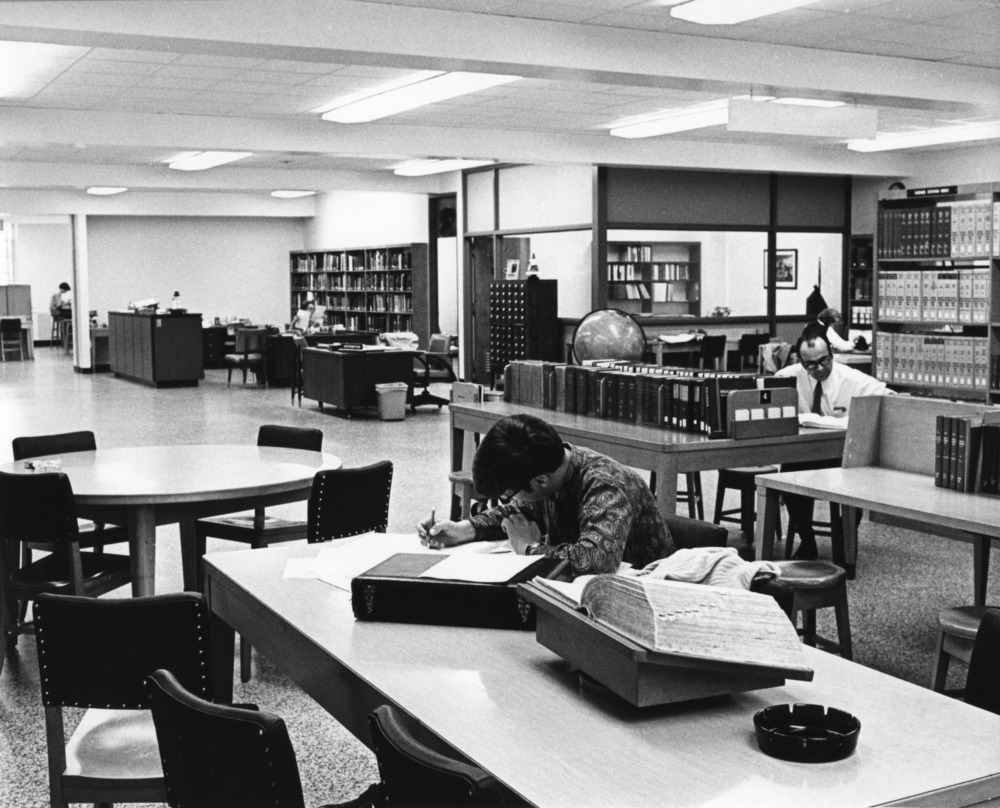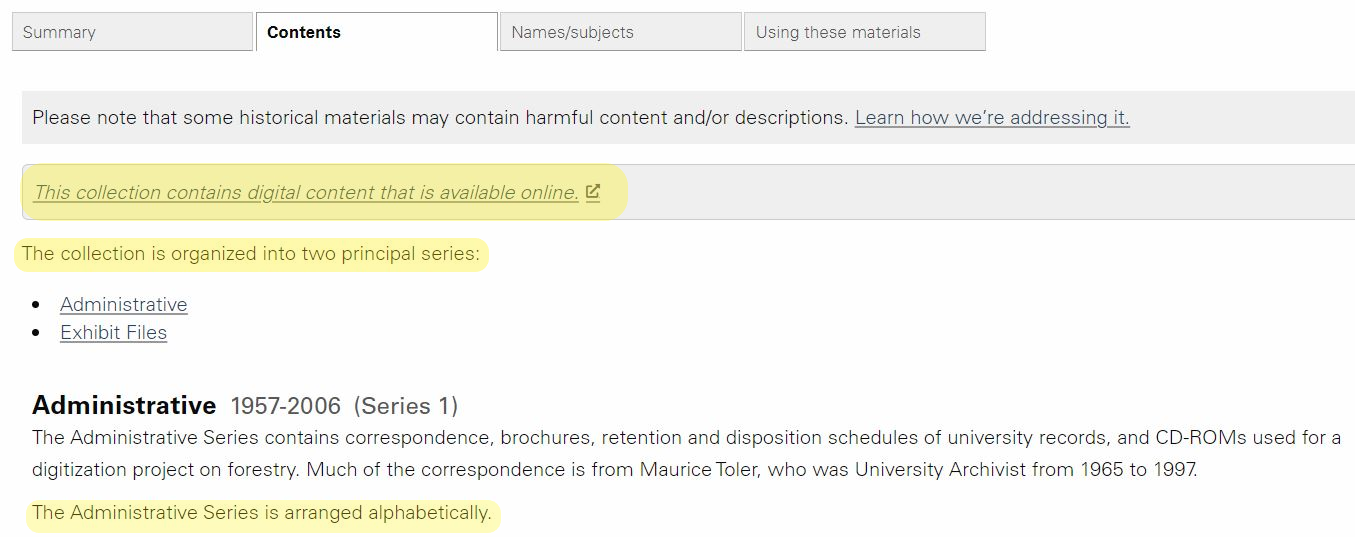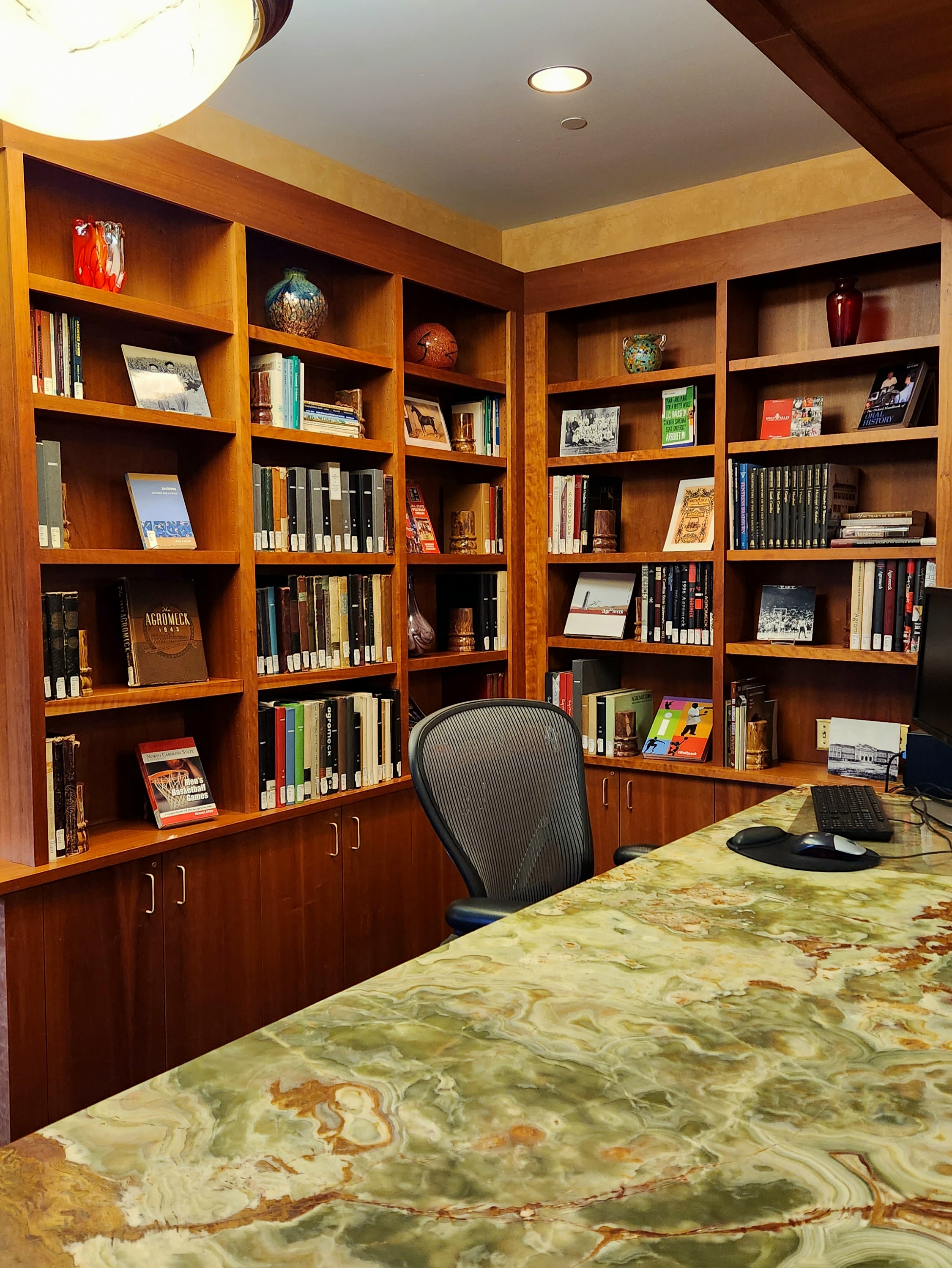
Study and reference area, D. H. Hill Jr. Library
Finding aid. Manuscript collection. Scope and content note.
Archival terms like these can be confusing at best and intimidating at worst for first time researchers. We previously published a couple blog posts, Archival Terms Explained and Archival Terms Explained: Part 2, that defined a few of our commonly used terms. In this post we’ll delve a little deeper into what a finding aid, or collection guide, is and how they’re organized.
Special Collections has a description of collections on our website, but basically finding aids/collection guides (we use both terms) describe the history and contents of a collection. Researchers can use these finding aids to help them search for materials within the collection relevant to their assignment(s) or project(s). Each collection in an archive should have its own finding aid and most finding aids are organized in the same way.
The two most useful parts of our finding aids for first-time researchers are the Summary and Contents sections. (All of the examples used in this post come from the Special Collections Research Center Records finding aid.)
The title page of each of finding aids opens to the Summary section. The first portion of the summary lists the creator(s), the size, the call number, and access information and/or restrictions for the collection.

The Society of American Archivists (SAA) has an online dictionary and it defines creators as the “individual, group, or organization” responsible for the creation or collection of materials.
For University Archives (UA) collections, the collection creator is the office, department, and/or college that created and transferred the materials to the Special Collections Research Center. For manuscript collections (MC), the creator may be an individual if the collection is someone’s personal papers or it may be a group, like an architecture firm.
The size, or extent, of the collection is described in terms of linear feet. This section also includes a breakdown of the types of containers, such as boxes or tubes, included in the collection. Collections can be as small as one folder or include hundreds of containers. Call numbers are unique and are another way to identify collections. Collections might have access restrictions for privacy reasons, due to donor agreements, or, in the case of born digital materials, if the files cannot be accessed and/or retrieved.

Underneath the access information are two abstracts. The first abstract describes the types of materials, e.g. correspondence, brochures, etc., in the collection. The second abstract provides information about the collection creator(s). Following these abstracts are a biographical/historical note and a scope and contents note.

These two notes usually provide additional information about the creator(s) and collection materials but sometimes are the exact same as the two abstracts. If the notes are the same as the abstracts then that is usually because we didn’t have additional information to add.
Finally, the arrangement note, appearing under the scope and content note, is another potentially helpful section for researchers. The arrangement describes how the collection is organized, whether that is alphabetically, chronologically, or into different series. As you can see here, this collection is arranged into two series: Administrative and Exhibit Files.
Once a researcher finds a collection that might be relevant to their researcher, how do they identify the specific item(s) or folder(s) they want to see? Underneath the title, to the right of the Summary tab, is the Contents tab.

This contents list has all of the folder titles and container information, e.g. “box 80, folder 7”, for the entire collection. Containers can be anything from boxes and cartons to tubes and flat folders.
Some folders may have additional notes, like an access note if the materials inside that folder have restrictions. Researchers can search this list by holding down CTRL and F and then typing their search term(s) into the box that appears.
For collections that include digitized items, we add a note at the top of this list with a link (which opens in a new window) to those materials.
At other archives and/or special collections this list is sometimes referred to as a “container list” or a “box and folder list.”
Once a researcher knows the item(s) that they want to see, they can email their request to us at library_specialcollections@ncsu.edu or submit their request online. If someone has questions or needs help searching our collections, they can use the same online form to contact us. Researchers usually are interested in specific folders, but we always request the entire container(s) from storage so researchers only need to tell us the collection number(s) and the box/carton numbers.
The vast majority of our collections are stored at an offsite facility, and it can take up to 7 business days to retrieve materials from storage. Large orders may take up to 14 business days. Once materials arrive, we bring them upstairs to the Special Collections Reading Room and set up an appointment, or appointments, with the researcher(s). Appointments are available Monday through Friday, 9am-6pm, and Saturday, 1pm-5pm. Requests for a Saturday appointment must be received by Tuesday of the same week.

We ask all new researchers to complete our researcher registration form, which you can now submit online. For first time researchers, we suggest looking at our “Using Special Collections Materials” page as you plan your visit. Among other information, this page includes links with directions to D.H. Hill Jr. Library, where we’re located, and directions to the Special Collections Reading Room. Researchers check in at the public services desk and need to show a photo ID as part of that process.
Archival research can seem daunting at first, but Special Collections is here to help! Hopefully this post helps to demystify finding aids but we are always happy to answer your questions (library_specialcollections@ncsu.edu). Anyone can access our collections and it doesn’t need to be for an assignment or project. If you find something in our collections that interests you, then feel free to request it!